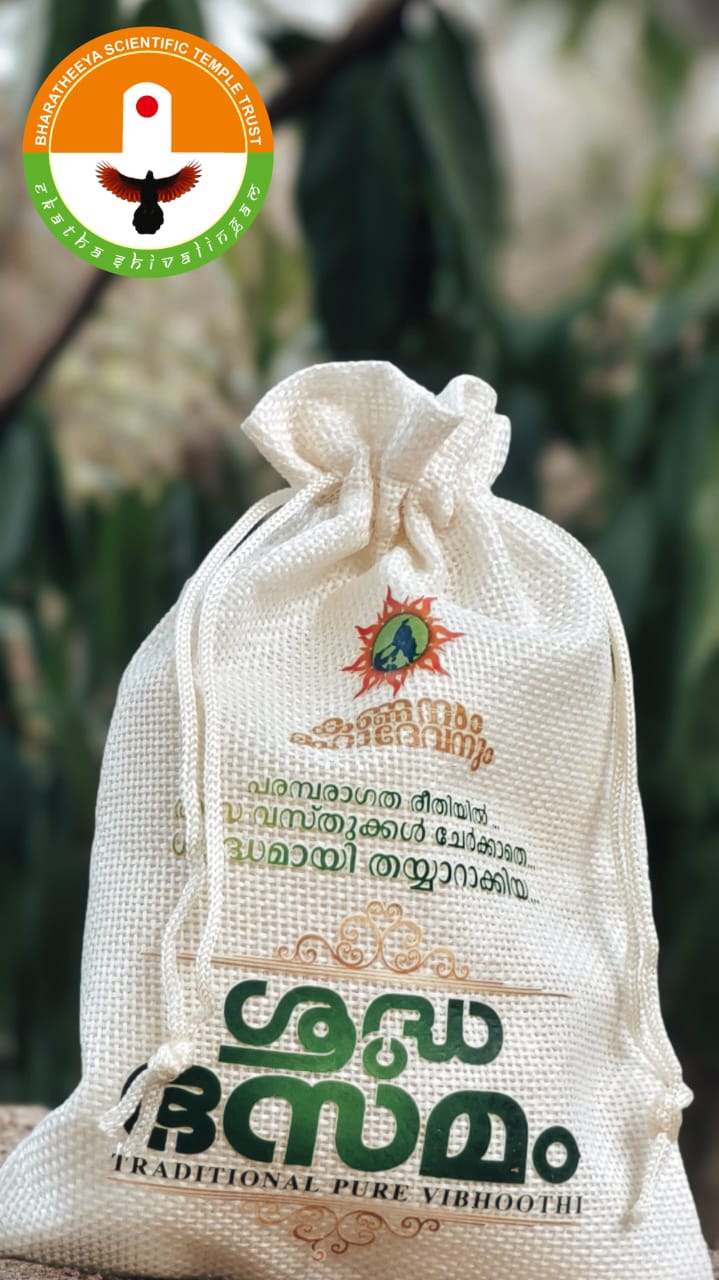Shudha Bhasmam
Shudha Bhasmam
Bhasma and Its Spiritual Significance in Hinduism
Bhasma is closely associated with spirituality in Hinduism. It is
made by burning the dung of cows, which is shaped into a
spherical form and then incinerated in fire. Bhasma is an
important ritual in Hindu life, especially among spiritually
committed individuals and devotees. Generally, it is used by
Shaivas (devotees of Lord Shiva) and is applied in temples of Lord
Shiva, Lord Subrahmanya, and Lord Ayyappa. It is also used in
tantric and mystical practices.
Bhasma is known by various names such as Bhasitam, Vibhuti,
and Raksha, each symbolizing different aspects. Bhasitam means
shining or illuminating. Bhasma signifies the destruction of sins,
Vibhuti denotes wealth and divine glory, and Raksha signifies
protection and salvation. In short, Bhasma specifically helps in
spiritual rituals such as purifying the body, mind, and soul
Preparation of Bhasma
The preparation of Bhasma involves using pure and natural
ingredients. Here is the process described:
1. Selection of Cows: Only cows that are well-maintained,
healthy, and adhere to natural feeding practices are selected.
These cows should be from reputable gaushalas, where their
diet and lifestyle are regulated in accordance with nature.
2. Collection of Cow Dung: Pure cow dung is collected from these
cows. This dung is then formed into spherical shapes, known as
Urulakal.
3. Drying Process: The cow dung balls are placed in a clean, sunny
area where they are dried under direct sunlight. This drying
process takes about seven days, during which time the dung balls
become solidified.
4. Purification with Special Rituals: After drying, the dung balls
are mixed with clean sand (known as Umi or Nellin Thodu) and
are subjected to specific mantras and prayers. These balls are then
placed into a sacred fire pit (Agni Kundam). Once the fire has
completely consumed the material, the Umi is allowed to burn
away, and only the ash remains.
5. Collection and Final Preparation: After several days of burning,
the collected ash is carefully sifted and mixed with water to form
a paste. This mixture is left to dry, and the resulting Bhasma is
then collected.
6. Drying and Finalizing the Bhasma: The Bhasma is placed under
the sun to dry completely. It is then ready for use, and it possesses
a rich color, indicating its purity and spiritual potency.
Significance and Use of Bhasma
Bhasma is used in various rituals, especially by followers of Lord
Shiva. It is applied on the forehead as a mark of spirituality,
representing purity, protection, and the destruction of sins. The
process of creating Bhasma through the use of sacred mantras and
rituals is believed to imbue the ash with divine energy, making it
not just a physical substance, but a spiritually charged offering.


